Daily Online Live Training
MASTER DEVOPS WITH MULTI - CLOUD ( AWS & AZURE )
100 DAYS MASTER CERTIFICATION PROGRAM

even if you are a beginner& don't have any technical knowledge.
FULL PAYMENT
Cost:₹ 7999
Details: Pay upfront and secure your spot in the course.
INSTALLMENT PAYMENT
Cost:Two installments of ₹4,000 each
Details:First Installment: Due at the time of registration. Second Installment: Due within 30 days of the course start date.
What You'll Learn in this 100 Days

Linux

Shell Scripting


Git & GitHub

Apache Maven

Jenkins

Sonatype Nexus

Ansible

Docker

Kubernetes



Monitoring Tools

Terraform


AWS & Azure Cloud

Splunk

Argo CD

Python

Gitlab

Apache Tomcat

Jira

JFrog

BitBucket

Trivy

Owasp Zap

Hashicorp vault

Dependency Check
Linux Overview
What is Operating System
What is Unix, Linux
Linux vs Windows
Linux Flavors
Linux Architecture
Linux Commands
Reading Files
Redirection Operators
User Management
Group Management
File System Management
Editors
Shell history and introduction
Types of shells
Shebang line in shell
Command line arguments
Variables
Types of Operators
Loops
Case Statement
Functions
Introduction to Cloud Computing
AWS Services
VM Creation in AWS
Elastic Compute Cloud (EC2)
AWS Regions and Availability Zones
Amazon Machine Images (AMI)
EC2 Instances
Amazon Elastic Block Store (EBS)
Load Balancing (ELB)
Auto Scaling
Network & Security
Amazon Virtual Private Cloud (VPC)
Amazon Route 53
Identity Access Management (IAM)
Amazon S3
Relational Database Service (RDS)
Amazon Cloud Watch
Cloud Formation
Amazon Simple Queue Service (SQS)
Elastic Bean Stalk
AWS Lambdas
Introduction
Azure Essentials
Azure Virtual Machines
Azure ARM Template
Azure Tags
Azure Network Security Group
Azure Virtual Machine User Data & Custom Data
Azure Load Balancer
Azure Scale Set
Azure Resource Locks
Azure Functions
Azure Kubernetes Services
Azure Networking
Bastion Server/ Jump Host in Azure
Azure Native Bastion Service
VNet Peering
Public DNS Zone
Azure + Terraform
Challenges with Traditional IT Infrastructure
Types of IAC Tools
Why Terraform?
Installing Terraform
HashiCorp Configuration Language (HCL) Basics
Update and Destroy Infrastructure
Using Terraform Providers
Configuration Directory
Multiple Providers
Using Input Variables
Understanding the Variable Block
Using Variables in Terraform
Resource Attributes
Resource Dependencies
Output Variables
Introduction to Terraform State
Purpose of State
Terraform State Considerations
Terraform Commands
Mutable vs Immutable Infrastructure
LifeCycle Rules
Datasources
Meta-Arguments
Count
for-each
Version Constraints
Getting Started with AWS
Demo Setup an AWS Account
Introduction to IAM
Demo IAM
Programmatic Access
AWS IAM with Terraform
IAM Policies with Terraform
Introduction to AWS S3
S3 with Terraform
Introduction to DynamoDB
Demo Dynamodb
DynamoDB with Terraform
What is Remote State and State Locking?
Remote Backends with S3
Terraform State Commands
Introduction to AWS EC2
Demo: Deploying an EC2 Instance
AWS EC2 with Terraform
Terraform Provisioners
Provisioner Behaviour
Considerations with Provisioners
Terraform Taint
Debugging
Terraform Import
What are Modules?
Creating and Using a Module
Using Modules from the Registry
More Terraform Functions
Conditional Expressions
Terraform Workspaces (OSS)
DevOps overview
Key stakeholders of DevOps
What is SDLC?
Phases of SDLC
Role of Developers in SDLC
Role of Operations in SDLC
Waterfall Model
Advantages of Waterfall
Disadvantages of Waterfall
Agile Development Process
Agile Manifesto
Agile Scrum Workflow
Agile Analysis Estimation Techniques
Types of Roles and Responsibilities in Agile
Problems That DevOps Solves
DevOps Lifecycle Overview
Core DevOps Tools
DevOps Technology Categories
Collaboration Tools
Planning Tools
Configuration Management Tools
Source Control
Development Environments
Continuous Integration
Continuous Testing
Continuous Deployment
Introduction
What is a Version Control System (VCS)?
Distributed Vs Non-Distributed
VCS
What is Git and where did it come from?
Alternatives to Git
Git Hub Account Setup
Obtaining Git Installing Git
Key Terminology
Staging Vs Un-Staging
Adding Files to Staging Areas
Removing Files from Staging Area
Commit to Local Repository
Pull Request
Push to Central Repository
Repository Cloning
Stashes & Stash Apply
Branching in Git
Why We need Branches
Cloning & Switching Branches
Fetching Changes (git fetch)
Rebasing (git rebase)
Git Pull
Git Conflicts
Branch Merging
Merging & Re Basing
Deleting a Branch
What is Configuration Management
What is Ansible
Installing Ansible
Testing with First Ansible Commands
Introduction to Play Books
YML File
Writing Play Books
Play Books Execution
Tags
Handlers
Introduction to Roles
Role Basics
Creating Role
Ansible Galaxy
Ansible Tower
What is Build Tool
Automated build process
Maven Introduction & Objectives
Maven Installation
Maven Terminology
Maven Archetypes
Maven Project Creation
Maven Dependencies
Maven Repositories (Local Repo, Central Repo, Remote Repo)
Maven Goals
Setting up a JFrog Artifactory Account
Configuring JFrog Artifactory Account
Adding an Artifactory Stage in Jenkins
Publishing a JAR to JFrog Artifactory from Jenkins
What is Apache Tomcat?
Tomcat vs. other Java application servers (WildFly, GlassFish, etc.)
Role in Java EE (Jakarta EE) architecture
Supported Java Servlets, JSP specifications, and APIs
Tomcat versions and compatibility with JDK
Prerequisites (Java JDK, environment variables)
Downloading and installing Tomcat
Directory structure overview (bin, conf, webapps, logs, lib, temp, work)
Starting and stopping Tomcat (Windows, Linux)
Using the Tomcat Manager application
Deploying and undeploying web applications
WAR file deployment
Hot deployment vs. cold deployment
User authentication for manager app (tomcat-users.xml)
server.xml – connectors, ports, services, and hosts
web.xml – servlet and filter configuration
context.xml – application-specific settings
What is Docker
Life without Docker
Life with Docker
Installing Docker on Linux
What is container
Docker run command
Working with images
Container Life cycle
Docker File
Docker Network
Docker Volumes
Docker Compose
Docker Swarm
Spring Boot App with Docker
Python App with Docker
MYSQL with Docker
What is Kubernetes
Docker Swarm Vs Kubernetes
Kubernetes Architecture
Control Plane
Worker Nodes
Namespaces
Pods
Pod Life cycle
Services (Cluster IP, Node Port, Load Balancer)
Replication Controller
Replication Set
Daemon Set
Stateful Set
Deployment (Recreate, Rolling Update, Blue Green)
Config Map
Secrets
Ingress Controller
HELM Charts
Introduction to Sonatype
What is Artifact Repo
Nexus Introduction
Nexus Setup
Snap Short Repository
Release Repository
Shared Libs
Maven with Nexus Repo Integration
Uploading Build Artifacts
Introduction to Jenkins
How to achieve Continuous Integration with Jenkins
Jenkins Server Setup
Jenkins Jobs
How to integrate Jenkins with Maven
Jenkins dashboard
Jenkins plugins – how to download and use
Setup and Running Jenkins Jobs
Configure Dashboard Configure System Environment Global Properties
Create and configure a job Run a job manually Triggering a Build Scheduled
Build job Manual Build job
Polling SCM
Post-Build Actions Archiving Build Results Notifications
Jenkins Plugins
Jenkins Master Slave Architecture
Jenkins Pipeline Introduction
Multi Stage Pipeline
Jenkins with Maven & Git Integration
Jenkins with Sonar Integration
Jenkins with Nexus Integration
Jenkins with Docker Integration
Jenkins with Kubernetes Integration
What is GitLab?
GitLab Modules
Understanding the basic Git commands
Executing Git commands
What is the “Git .add” command?
Using the “Git commit” command
How to set Git configurations?
How to review the history of the repository?
How to merge a branch in Git?
Using the “Git stash” command
Introduction to GitLab terminology
Getting started with GitLab
GitLab Account Authentication
GitLab Group Dashboard Interface
Creating a new project in GitLab
Exploring Packages & Registry section
Creating ‘new issue’ in the project
Introduction to GitLab Flow Tutorial
What is a branching strategy?
Common Git Branching Strategy
GitHub Flow
Git Flow
GitLab Flow
Getting started with applying GitLab Flow
Using Markdown syntax
Modifying the “Readme” file locally in the machine
Understanding the “git push & “git pull’ command
Creating “merge request”
Making changes in the “Readme” file
Understanding Production Branch
Introduction to GitLab CI/CD Tutorial
Important GitLab CI/CD terminologies
Getting started with GitLab Cl/CD Pipeline
Defining GitLab CI/CD Pipeline for a project
Getting familiar with the Pipeline editor
Defining pipeline variables to run the desired job
Reviewing the jobs
Reviewing the environment for Deploying the jobs
Introduction to GitLab CI Tutorial
Walkthrough of the codebase
Writing an equivalent GitLab pipeline
Adding environment variables in GitLab
Example of artifact keyword in GitLab
Comparison of GitLab pipeline and Jenkins Pipeline
Triggering the GitLab pipeline
GitLab releases overview
GitLab Package Registry
GitLab Container Registry
GitLab Infrastructure Registry
Walkthrough of the code inside the test pipeline project
Reviewing the “pom.xml” file
Writing GitLab pipeline
Creating tags in the pipeline
Introduction to monitoring and observability
Installing and configuring Prometheus
Setting up Node Exporter for system metrics
Using Black Box Exporter for external endpoint monitoring
Installing and configuring Grafana
Connecting Prometheus as a data source in Grafana
Creating custom dashboards and visualizations
Setting up alerting rules in Prometheus
Configuring Alertmanager for notifications
Sending alerts via email, Slack, or other integrations
Running Prometheus, Node Exporter, Black Box Exporter, Alertmanager, and Grafana
using Docker
Managing monitoring stack with Docker Compose
Deploying Prometheus and Grafana in a Kubernetes cluster
Collecting and visualizing node-level metrics
Setting up alerts for CPU, memory, and disk usage
Monitoring application performance in Kubernetes
Using service discovery in Prometheus to scrape application metrics
Creating dashboards in Grafana for application-specific monitoring
Integrating Grafana with GitHub for tracking repository activities
Visualizing GitHub metrics using Grafana dashboards
Introduction to Elasticsearch
Elasticsearch vs OpenSearch
Installation & Hosting
Basic Architecture
Sharding & Replication
Node Roles
Index Management
Document Management
Routing & Versioning
Batch Processing & Data Import
Analysis & Mapping
Analyzers
Searching
Parent-Child Relationships
Result Formatting
Aggregations
Advanced Search Features
GitOps & Argo CD Fundamentals
Setting Up Argo CD: Installation, User Management
Managing Applications & Sync Strategies
Continuous Delivery & Rollbacks
Syncing, Diffing & Monitoring
Application Security & Best Practices
Customizations, CRDs & Webhooks
Troubleshooting & Debugging
Why Python for DevOps?
Installing Python and setting up the environment
Writing and executing Python scripts
Understanding Python datatypes (int, float, string, list, tuple, dict, set)
Variable declaration and best practices
Defining and calling functions
Understanding function arguments (positional, keyword, default)
Creating and importing modules
Using built-in and third-party Python libraries
if-else conditions
for and while loops
Loop control statements (break, continue, pass)
Reading and writing files (open(), read(), write())
Working with CSV and JSON files
File handling best practices
Understanding socket programming
Creating a simple client-server connection in Python
Parsing JSON data using Python
Creating and modifying JSON objects
Introduction to databases and SQL
Using Python with databases (PostgreSQL, MySQL)
Setting up a PostgreSQL database
Connecting Python to PostgreSQL
Introduction to AWS SDK (boto3)
Automating AWS services
Introduction to the docker-py library
Automating Docker container management using Python
Running and managing containers programmatically
Using Python kubernetes-client SDK
Automating Kubernetes deployments using Python
Managing Kubernetes resources (pods, deployments, services)
Security Tools Overview
Trivy Setup & File System Scanning
OWASP Dependency Check Setup & Usage
Tools like Prowler, Dockle, OWASP ZAP
Security Tools Integrations With CI/CD
SBOM (Software Bill of Materials) Hands-On Usage
HashiCorp Vault
Java Application Deployment
Python Application Deployment
Angular Application Deployment
React JS Application Deployment
Fullstack Application Deployment (SpringBoot + Angular)
AWS Architecture Creation with Terraform
ArgoCD with GitOps Deployments
Docker Advanced Project
Ansible Automation and Roles Creation
Flask Web Application with CI/CD
Containerized Microservices Architecture
Kubernetes Cluster Management
Infrastructure as Code with Terraform
Monitoring and Alerting System
Complete DevOps Pipeline Integration
ML Model Deployment Pipeline
Resume Preparation
Frequently Asked Interview Questions
Mock Interviews
LinkedIn Optimization
Capstone Projects
Tech Stack Used Here:

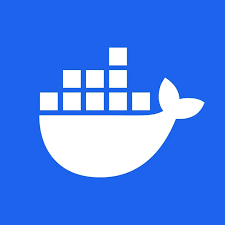


Objective:
Build and deploy a Python Flask application with automated testing and deployment pipeline
Implementation:
Create a Flask web application with multiple routes
Write unit tests using pytest framework
Set up Docker containerization
Configure Jenkins CI/CD pipeline
Deploy to AWS EC2 with automated rollback.
Tech Stack Used Here:


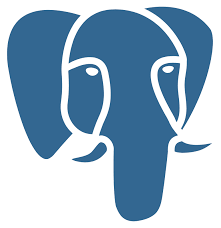
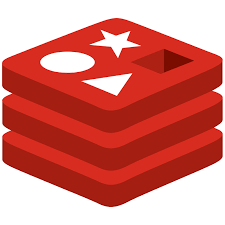
Objective:
Design and implement a microservices architecture using Docker containers.
Implementation:
Break monolithic app into microservices
Create Docker images for each service
Set up inter-service communication
Implement Redis for caching
Configure PostgreSQL database
Use Docker Compose for orchestration
Tech Stack Used Here:

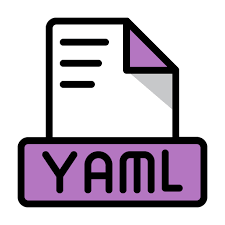

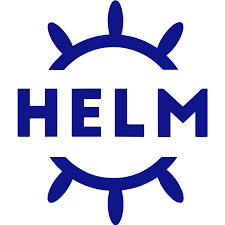
Objective:
Deploy and manage applications on Kubernetes with auto-scaling and load balancing.
Implementation:
Set up Kubernetes cluster on AWS EKS
Create deployment and service manifests
Configure horizontal pod autoscaling
Implement load balancing with ingress
Set up persistent volumes
Monitor cluster health and performance
Tech Stack Used Here:

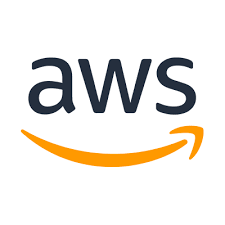

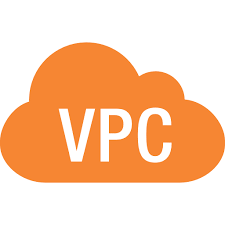
Objective:
Provision and manage cloud infrastructure using Terraform
automation.
Implementation:
Design cloud architecture blueprint
Write Terraform configuration files
Create VPC, subnets, and security groups
Provision EC2 instances and load balancers
Set up S3 buckets for state management
Implement infrastructure versioning
Tech Stack Used Here:


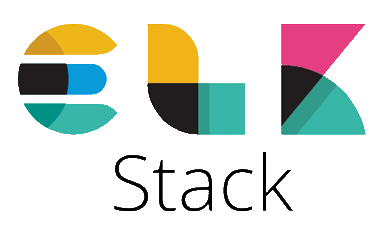

Objective:
Implement comprehensive monitoring, logging, and alerting for production systems.
Implementation:
Set up Prometheus for metrics collection
Configure Grafana dashboards
Implement ELK stack for log aggregation
Create custom metrics and alerts
Set up notification channels
Build SLA monitoring system
Tech Stack Used Here:




Objective:
Integrate all previous projects into a unified, production-ready
DevOps pipeline.
Implementation:
Implement GitOps workflow with ArgoCD
Add security scanning to pipeline
Set up multi-environment deployments
Configure backup and disaster recovery
Implement blue-green deployment strategy
Create comprehensive documentation
Tech Stack Used Here:

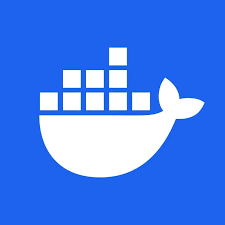


Objective:
Deploy a machine learning model with complete MLOps pipeline including monitoring and A/B testing.
Implementation:
Prepare and validate ML model (.pkl file)
Create Flask API for model serving
Build Streamlit interface for testing
Containerize application with Docker
Set up Jenkins pipeline for ML deployments
Deploy to AWS EKS with auto-scaling
Implement model monitoring with Prometheus
Create infrastructure with Terraform
Set up A/B testing framework
Monitor model drift and performance
Who Should Attend?

System Administrators

Application Developers

Cloud Professionals

Software Engineers

Looking for DevOps Internship

Infrastructure Architects

Individuals aiming to build credibility and value as experienced DevOps professionals.

Freshers

Security Engineers

Practitioners

Site Reliability Engineers

Solution architects

Technical Leads

Aspirants looking to work as DevOps professionals
Bonus Features

Real-World Projects
Automated CI/CD pipeline for real-time code integration and deployment.

Lifetime
Access
Materials and
recordings are
available even after
the training ends.

Free
Support
Post-training, we will provide end to end
guidance for
placement

Attend any
Batch
If you have enrolled
in a batch, you can
attend other batch for
free.
Why Attend This Training?
Expert Instruction: Learn from industry professionals who bring real-world experience.
Career-Boosting Skills: Mastering devops with aws is a must-have skill for developers and tech professionals.
Interactive & Hands-On: Experience real-world scenarios, exercises, and guidance from industry experts.
Networking Opportunities: Connect with peers and expand your professional network.
Supportive Community: Join a collaborative environment for sharing knowledge and resources.
Certification: Receive a training and internship certificate of completion to boost your resume and showcase your new skills.
What Are You Waiting For?
Limited Slots Available!
Secure Your Seat Now and Start Your DevOps Journey
Frequently Asked Questions
Yes! A certificate is awarded to those who successfully complete the training.
No, this training is designed for beginners to advanced learners.
Yes, you will have lifetime access to the training materials.
The training program lasts 100 days.
Yes. For those who enrolled in this training will be added to a community where technical support team members will answer your queries.
RESERVE YOUR SPOT
Full Payment
We HATE spam. Your data is 100% secure
RESERVE YOUR FREE SPOT
Installment Payment
We HATE spam. Your data is 100% secure











